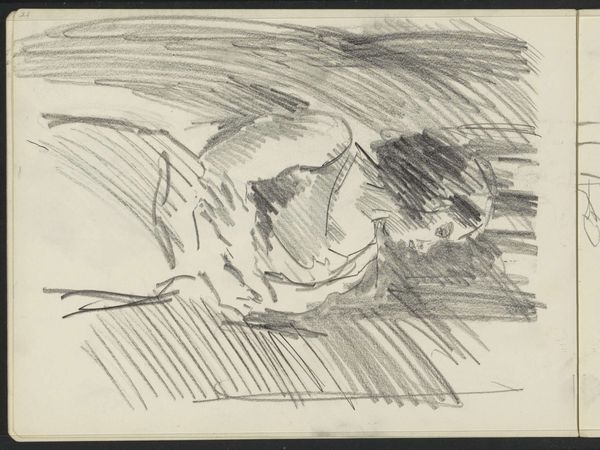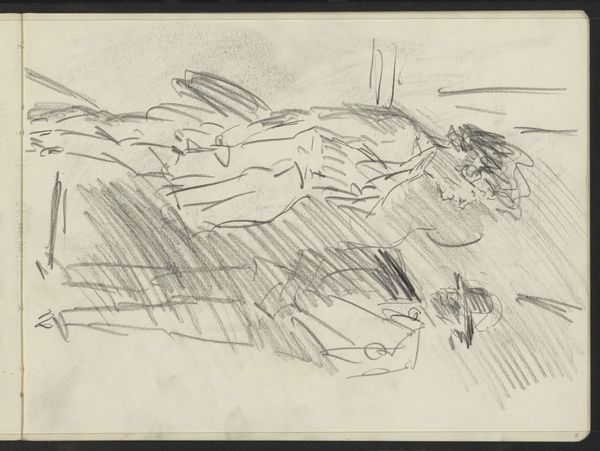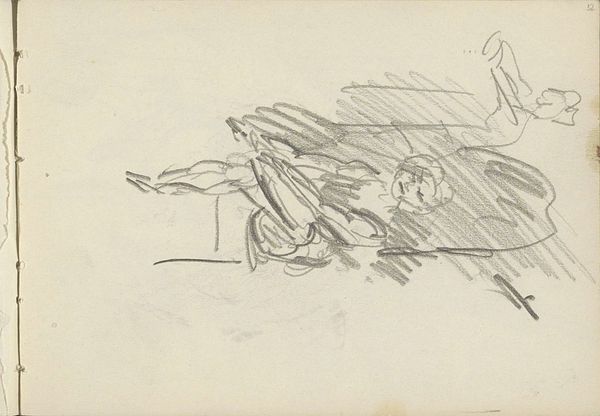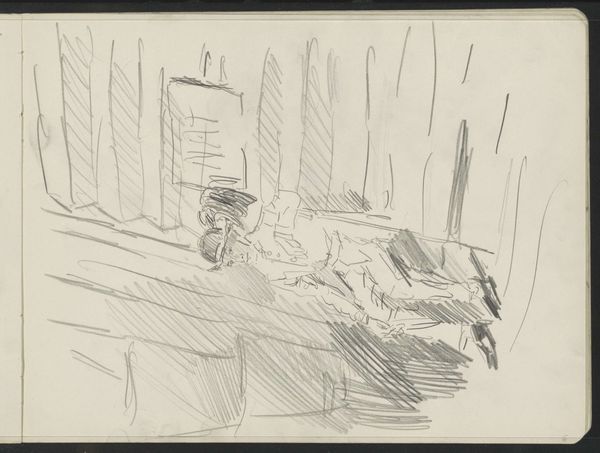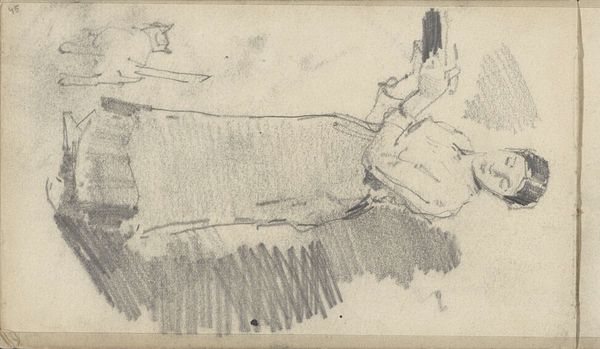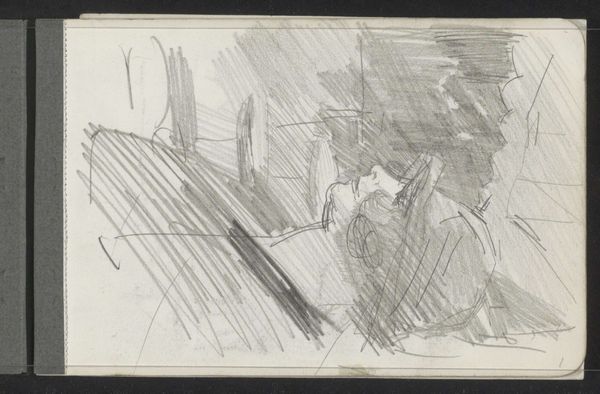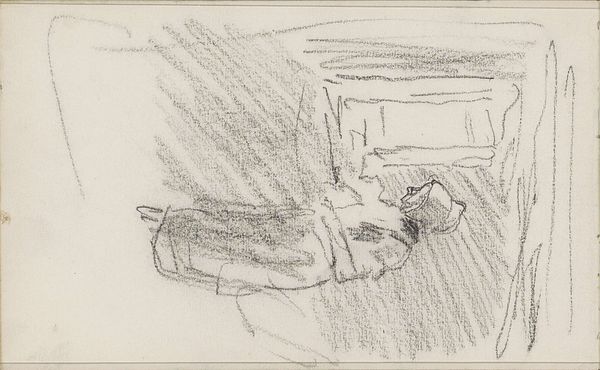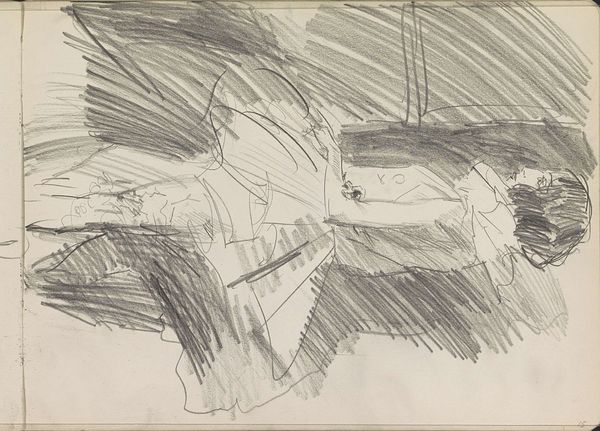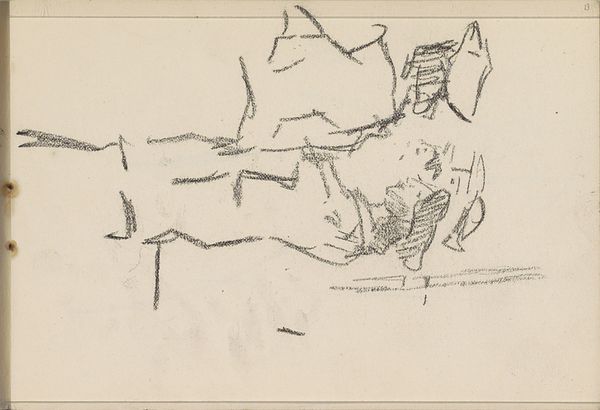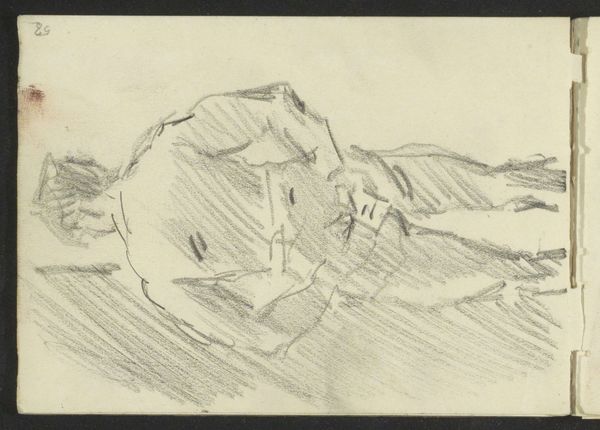
Copyright: Rijks Museum: Open Domain
Curator: This is Isaac Israels's "Vrouw op een stoel," or "Woman in a Chair," a drawing created sometime between 1915 and 1925. Editor: It looks unfinished, almost like a study. You get a real sense of immediacy; the artist is capturing a fleeting moment. The pencil strokes feel energetic, like they're mapping out the form and volume in real time. Curator: Exactly. Israels, known for his impressionistic style, was concerned with conveying light and atmosphere through economical means. What's interesting is the level of social engagement inherent in these quick sketches, especially given their later exhibition in established gallery spaces. It begs the question: were these 'raw' depictions truly meant for public consumption, or did the act of display change their nature entirely? Editor: The material choices contribute to that impression. It's "just" pencil on paper, which keeps it accessible, not elevated, but also foregrounds the artist’s labor. Look at the dense hatching creating shadow, and the almost frantic lines defining the figure’s clothing. You see process made visible, labor embodied in mark making. Do you think it intentionally subverts traditional ideas of "fine art," making it more about the activity of making than the refined outcome? Curator: In many ways, yes. Israels came from a privileged background, but he chose to depict everyday subjects – street performers, workers, and scenes from cafes. This subject, while simply titled "Woman in a Chair," offers no contextual clues regarding her class or employment, which challenges the viewer to contend with a pure focus on human form within the banality of quotidian experience. Its availability now in the collection of the Rijksmuseum further emphasizes the changing perception of what subject matter is suitable for serious, canonical artistic attention. Editor: It prompts interesting reflections on the commodification of these "ordinary" scenes through the lens of art. This drawing reminds us that images never truly speak for themselves, but acquire meaning from where they’re produced and circulated. Curator: Indeed. Perhaps these observations can lead us to explore not just the individual talent, but also what societal framework facilitated these artistic creations and ultimately dictated their place in cultural history. Editor: Right, seeing this piece alongside those concerns makes me think differently about the role of drawings, about sketches, and what's at stake in showing what appears as casual work to a broader audience.
Comments
No comments
Be the first to comment and join the conversation on the ultimate creative platform.
